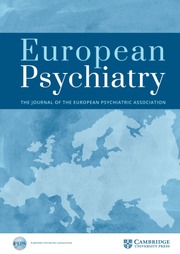No CrossRef data available.
Article contents
The role of early developmental and familial factors in the development of selective mutism: A case-control study
Published online by Cambridge University Press: 16 April 2020
Abstract
The etiology of selective mutism (SM), a relatively rare psychiatric disorder of childhood characterized by consistent failure to speak in specific social situations despite having appropriate language skills has not been clarified. Although, number of biological and environmental factors have been identified as risk factors based on case studies or studies with small sample size, there were only few investigations with a case-control design. Our aim was to explore the role of several early developmental and psychosocial factors in the development of the disease by comparing patients with SM to a control group.
37 children hospitalized due to SM between 1995 and 2005 were compared to 45 community controls in the same age range and similar sex ratio. Patients were evaluated by a comprehensive diagnostic assessment including an interview focusing on developmental history. In case of controls we used a self-rating version of the General Information Sheet a fully structured interview about the developmental history.
Among the cases there were 24 (64.9%) girls and 13 (35.1%) boys. The mean age of the patients was 8.24 years. Among the 21 variables in 8 domains we found significant differences between the two groups in terms of speech development, frequency of divorce and moving, and education level of the parents.
Our case-control investigation with considerably large sample of children with SM confirmed those earlier findings that early neurodevelopmental problems along with environmental factors could render children vulnerable to development of SM.
- Type
- Poster Session 2: Anxiety, Stress Related, Impulse and Somatoform Disorders
- Information
- European Psychiatry , Volume 22 , Issue S1: 15th AEP Congress - Abstract book - 15th AEP Congress , March 2007 , pp. S276
- Copyright
- Copyright © European Psychiatric Association 2007



Comments
No Comments have been published for this article.